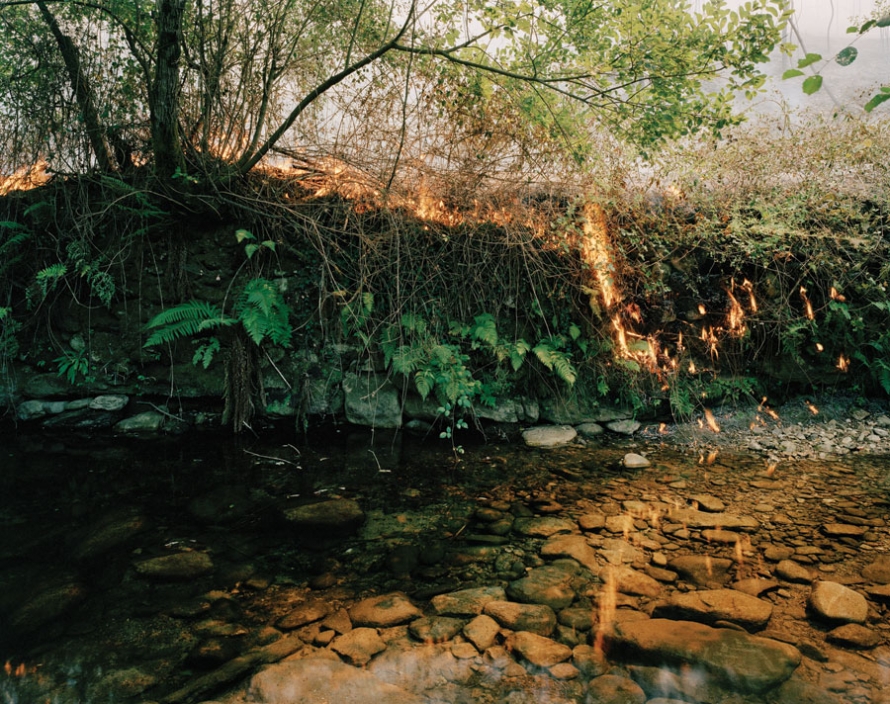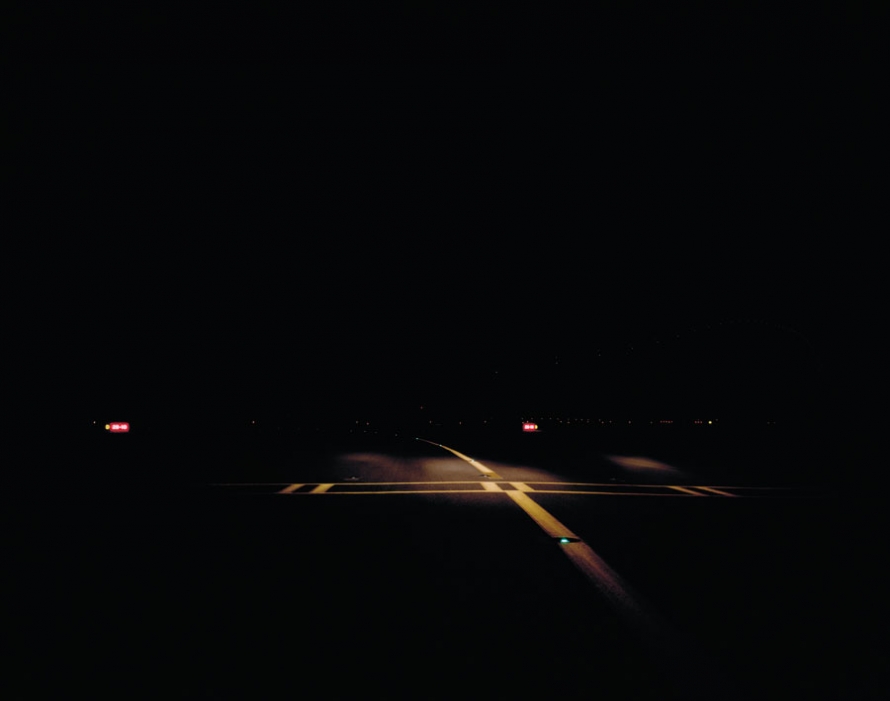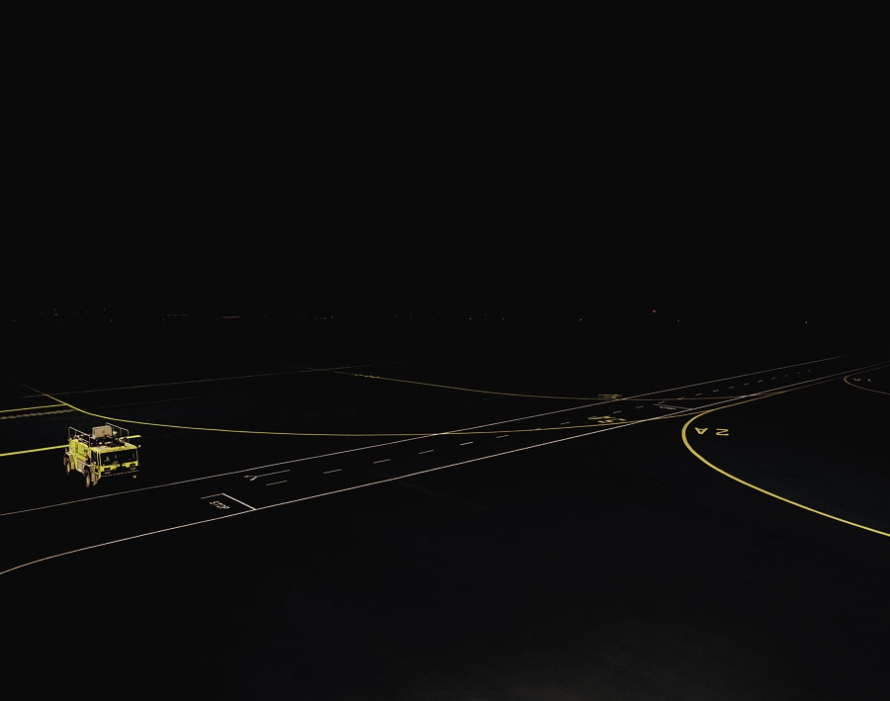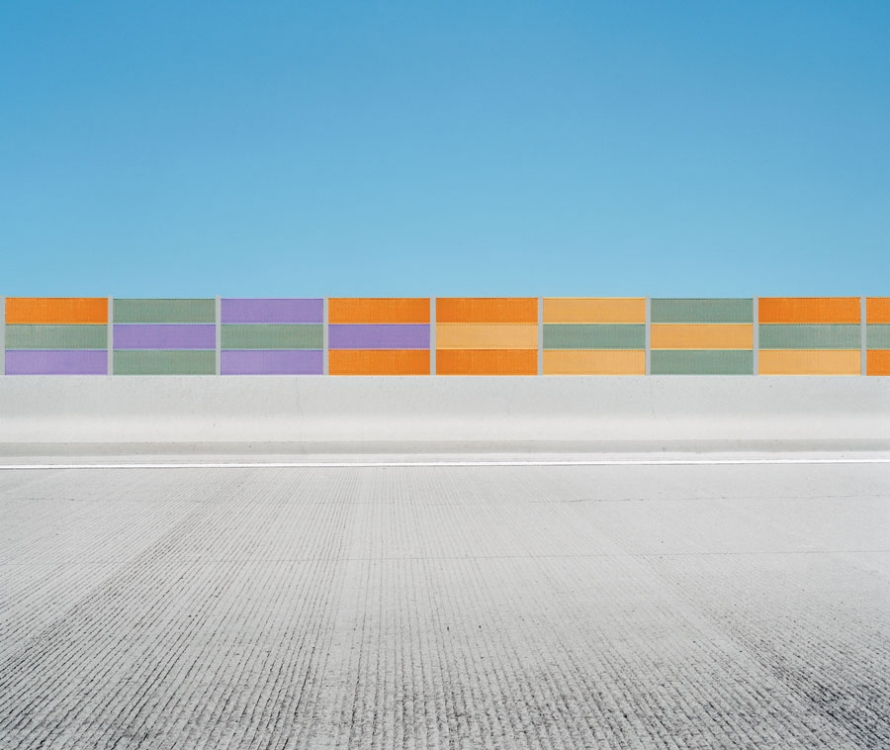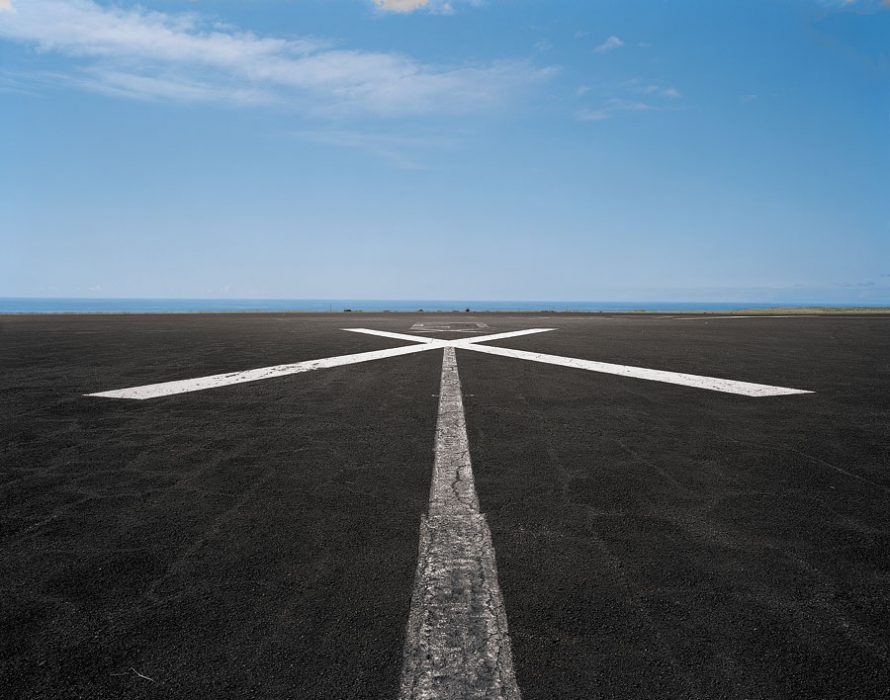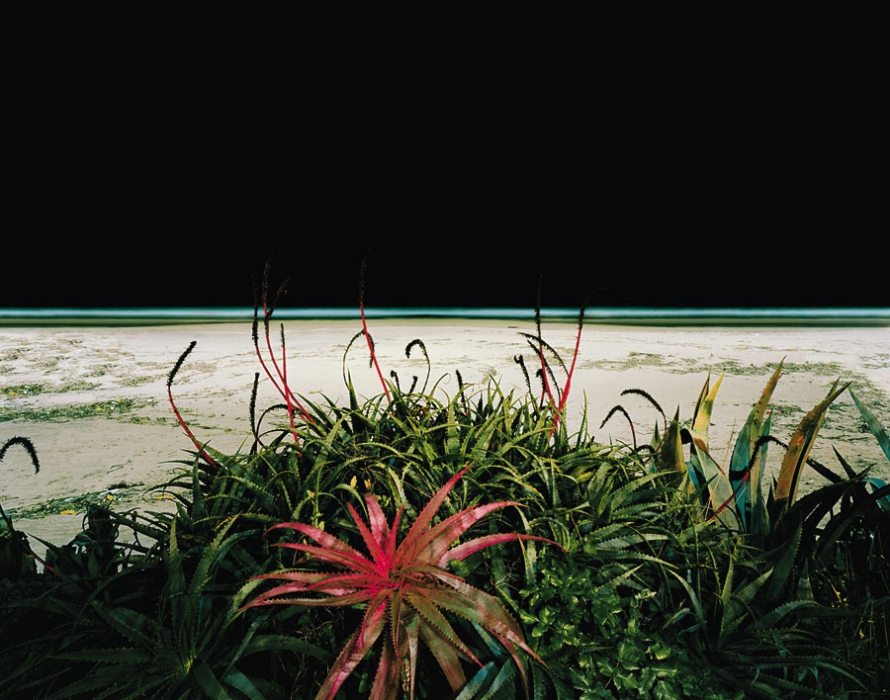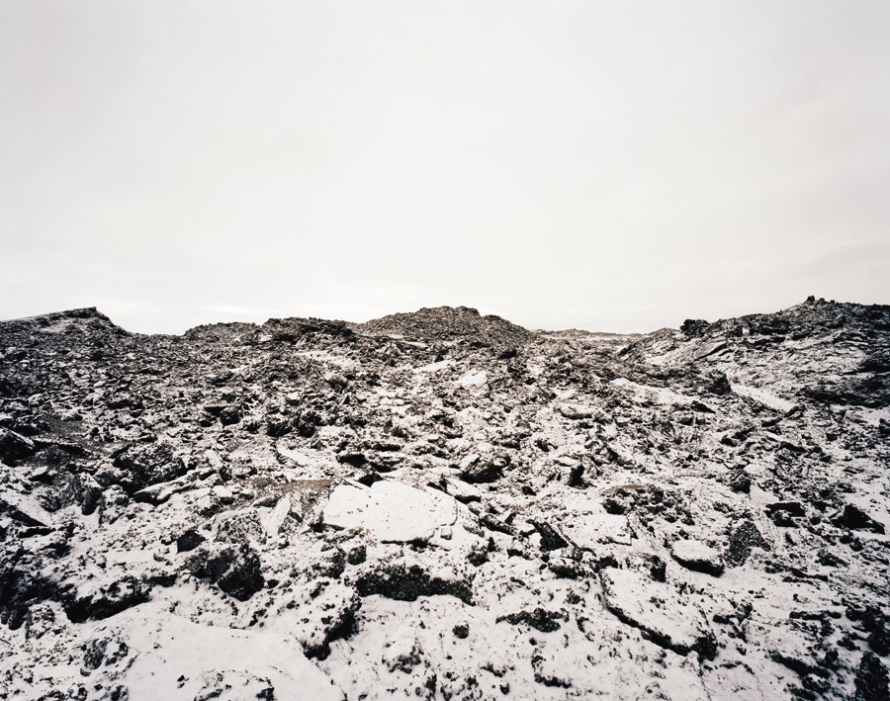Places you thought were perfectly banal have secret identities. In his new book Topologies (Aperture), photographer Edgar Martins seeks them out, takes his time, and without any post-production trickery exposes what you missed, say, the last time you landed at J.F.K.
All photos © Edgar Martins, courtesy of the artist, all rights reserved.
Even in your forest fire pictures or the Iceland landscapes, there’s a profound sense of control. Is this to set a frame on something wild? To define the space? To control enough so the imagination’s set free?
My work has an apparent formalism and aesthetic rigor that some define as being precise. However, the process by which the images are created is everything but precise. I photograph in often “unphotographable” conditions, whether in burning forest fires or the icy winters of Iceland. I also make use of long exposures. When you work in this way even the most natural of occurrences become difficult to quantify: light, time, focus, etc. For so long photography has been about control; I like to relinquish some of that control. This apparent contradiction, this dualism really interests me. I have always found photography to be a highly inadequate medium for communicating ideas—a subject and object of lack, if you like. However, it is this dissatisfaction with the medium that spurs me on to find a new visual language to work with, and, I suppose, a new vocabulary from which to derive my glossary of life.
Photographers are always negotiating between forms in the world and forms in the image, recording the world but also transforming it at the same time. The experience of place is often pared down in images. In a photograph that is pared down, one ends up with slightly hyper-realistic imagery—precise and clear, but the meaning is elusive.
Though my images are minimal in tone, they do not pare down my experience of place. In my work there is scope for so much more. What seem like highly controlled and manipulated photographs are but a product of illusion. The illusion of the photographic process. This is especially evident in “The Accidental Theorist” series. Most people assume that these image are manipulated. Or perhaps even staged. In reality, there is no post-production work, no darkroom or computer manipulation. At first glance you are drawn to the unforgiving dark skies, or the otherworldly qualities of the space. But then a sort of magic act takes place and objects start revealing their unique identities, their inconsistencies, and, if you like, their “obtuse meaning” (which Roland Barthes believes to have something to do with disguise).
So how strong is the pull towards illusion for you?
In photography there is a complicity between the observed and the observer, but there is also an element of theatricality that transcends this personal relationship. Photography has a tendency to theatricalize the most banal of subjects.
It is true that I am interested in theatre, in performance, but not in a traditional sense of the word. I am interested in recording the world’s performance of itself as a set of processes and facts. And the only way to do this is to slow down time. That is why I often use long-exposures.
Without reading anything about the photographs, I’d have no idea where we are, except that the locations appear to be contemporary, and often we’re in some type of dangerous situation (or somewhere danger might creep in). How important is a sense of name-able place? Of threat?
In my work I always strive for a dynamic play of reality and fiction, prioritizing poetic memory over concrete topographies. The lack of temporal reference and people is also important. It provide the viewer with a canvas on which to project his/her ideas, memories, thoughts, experiences, or even a narrative. But more importantly it provides a blank canvas on which to project his or her humanity.
What are you working on now?
A very interesting series, which incorporates elements of all the above projects. It is a project which focuses on the waste product of quarries. But not in a documentable fashion, of course.
